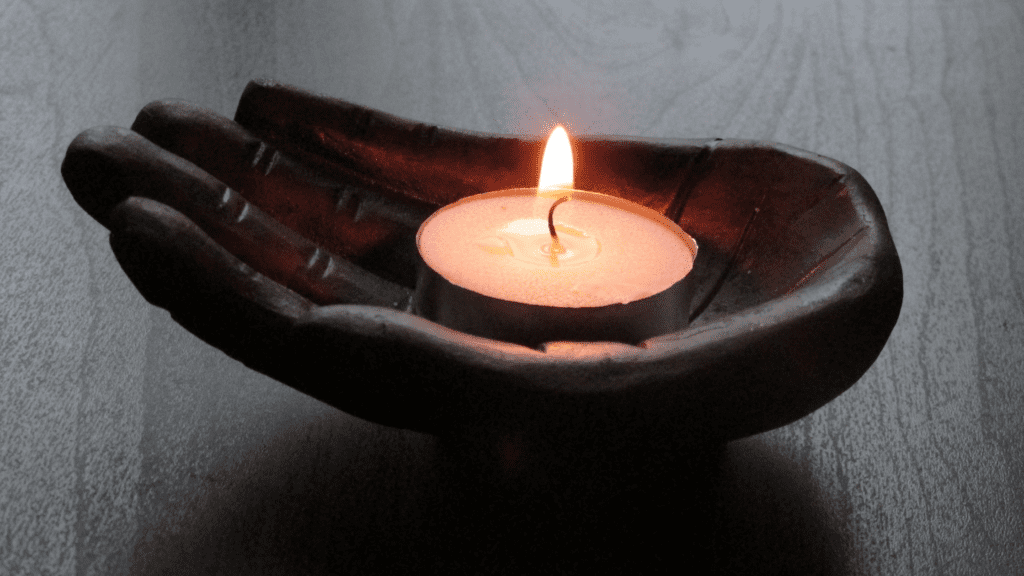
Science has served as a double-edged sword for meditation. On the plus side, scientific research has helped adapt meditation into secular settings, which has provided broad access to Western audiences. It has also led to innovations in healthcare, education, social activism, workplace culture, and other areas. At the same time, there are valid critiques to the scientization of meditation. In many modern forms of meditation, the cultural elements of traditional practice have been filtered out because they were perceived as incongruent with modern cultures and scientific rigor. For example, a neuroscientific lens on meditation leads to great emphasis on the brain, to the neglect of the wider social and cultural context in which an individual’s mind is enacted, as Evan Thompson describes in Why I Am Not a Buddhist. In another critique, modern mindfulness was stripped of traditional practices in their original communal context and embedded within a capitalist, privatized framework, leading to a de-emphasis on community and liberation, as Ronald Purser describes in McMindfulness.
Meditation practitioners in modern cultures face a challenging task between seemingly competing forces. On one hand, contemplative practices need to be adapted so they can effectively serve and transform the hearts and minds of people in modern cultures. On the other hand, there is a need to understand and preserve key elements of the cultural contexts in which contemplative practices have been traditionally embedded because those cultural contexts contain integral forms of practice.
Although scientific research has contributed to the decontextualization of meditation, I propose a way forward that draws on science to unify both of these aims. Through close collaboration, people with expertise in both contemplative traditions and science can use science to help discern and recover valuable elements of traditional cultures for people with modern upbringings. Theories and vocabulary from psychological science can help us understand valuable functions fulfilled by certain forms of traditional practice; this can then inform the development of new forms of practice that serve similar functions to meet the psychological needs of current meditation practitioners.
In fact, the adaptation of Buddhist teachings to meet new cultural needs has been the norm throughout Asian Buddhism. As Buddhism spread beyond India and took root in diverse Asian cultures, new forms of teaching and practice were developed to meet the hearts and minds of those cultures. Adaptation has been a feature of Buddhist contemplative practices from their earliest days.
A notable example of a traditional practice that can pose challenges for modern meditators is the ritual-meditative practice of “going for refuge.” In Buddhist traditions, the practice of refuge is foundational to all contemplative practice, and involves the meditator seeking protection from the causes of suffering by relying upon the awakened qualities, teachings, and practices of enlightened beings who embody freedom from suffering—that is, the Buddha, the dharma, and the accomplished sangha. This style of practice provides a context in which enlightened beings and practitioners mirror back to the practitioner her own potential for enlightenment, so she can actualize that potential and join them by becoming an extension of their way of seeing and holding the world.
By receiving care through forms of contemplative practice that are culturally effective for them, practitioners are empowered to care for others. We call this the relational starting point for cultivating care and compassion. This relational starting point for meditation is shared throughout the world’s contemplative traditions—including contemplative forms of Christianity, Judaism, Islam, Hinduism, Confucianism, and many indigenous forms of spirituality.
This pattern is also available within modern psychology, where seeking refuge is a behavior that can be viewed through the lens of attachment theory. When infants are distressed, they have an innate tendency to seek out the protection of a caregiver. The infant’s cries are a bid to ensure proximity to the caregiver. Sensitive care encourages the infant to explore the world, and over time, helps the child develop the inner secure base needed to extend care and curiosity to others.
In our modern context, the secularization of contemplative practices has often meant the loss of these critical refuge and communal elements, because they’ve been viewed as too ritualistic, religious or otherwise incompatible with our culture. In a recent paper, John Makransky and I explore how insights from attachment theory can help make refuge practices more accessible, and thereby reclaim key psychological functions from traditional practices.
Research in social psychology called “attachment priming” provides a way to understand and recover refuge style practice. By calling to mind a simple moment of caring connection with any person or being, feelings of security can be evoked, yielding access to caring qualities that support compassionate action. We call this a “caring moment.” By integrating attachment priming via caring moments into their practice, meditators can begin to connect with and settle into the experience of a secure base. With repetition, practitioners build resources to process difficult feelings with acceptance and care, to examine one’s own biases, and to engage in compassionate and courageous action in the world with increasing sustainability and inclusivity.
To recover refuge-style practice in ways that build such a secure base can also help with the cognitive process of “reappraisal,” derived from psychological research on stress. The idea is to reframe, or reappraise, stress reactions in the body as a resource that is helpful, rather than harmful. In meditation, if one is experiencing difficult feelings within a field of care (from the caring moment practice), those feelings themselves can be employed as means to evoke qualities of acceptance, warmth, and care, which can then inform one’s ability to extend care to self and others.
Scientific theories can also help address needs that are specific to current systemic challenges and intergenerational histories. In the book My Grandmother’s Hands, Resmaa Menakem draws on recent scientific findings that illustrate how patterns of trauma are stored in the body. Menakem describes how our bodies express habitual responses that are conditioned by cultural histories of trauma, and lifts up the corresponding need for somatic practices to help us process these embodied patterns. That perspective highlights the need to bring an understanding of heritage and ancestral trauma into our practice. By processing the pain of our ancestors in our own embodied experience, we can begin to heal that trauma within ourselves on their behalf, as Lama Rod Owens has written about in Love and Rage.
Alongside other teaching colleagues, in my experience practicing and teaching meditation to Buddhists and non-Buddhists, I have found that psychological concepts like these help make meditation more accessible. Developing conceptual sophistication with psychological vocabulary is a form of practice that helps to better understand how internal sensations and feelings are tied to the past (and present), as Lisa Feldman Barrett described in How Emotions Are Made. Conceptual sophistication can also help deepen our meditation practice, by giving more precision to insights about the constructed nature of our experience.
Contemplative practices are not static. In their ideal form, practices will flexibly adapt to meet the hearts and minds of the people who take them up. By learning to access and reconnect with love, care, and compassion as prior traditions have done, but in ways now assisted by conceptual tools of modern science, modern practitioners can learn to practice in ways that are effective for them, as traditional cultures have done. That form of practice can help serve as an offering back to traditional cultures, by honoring and upholding the effectiveness of the practices that they have passed on.


